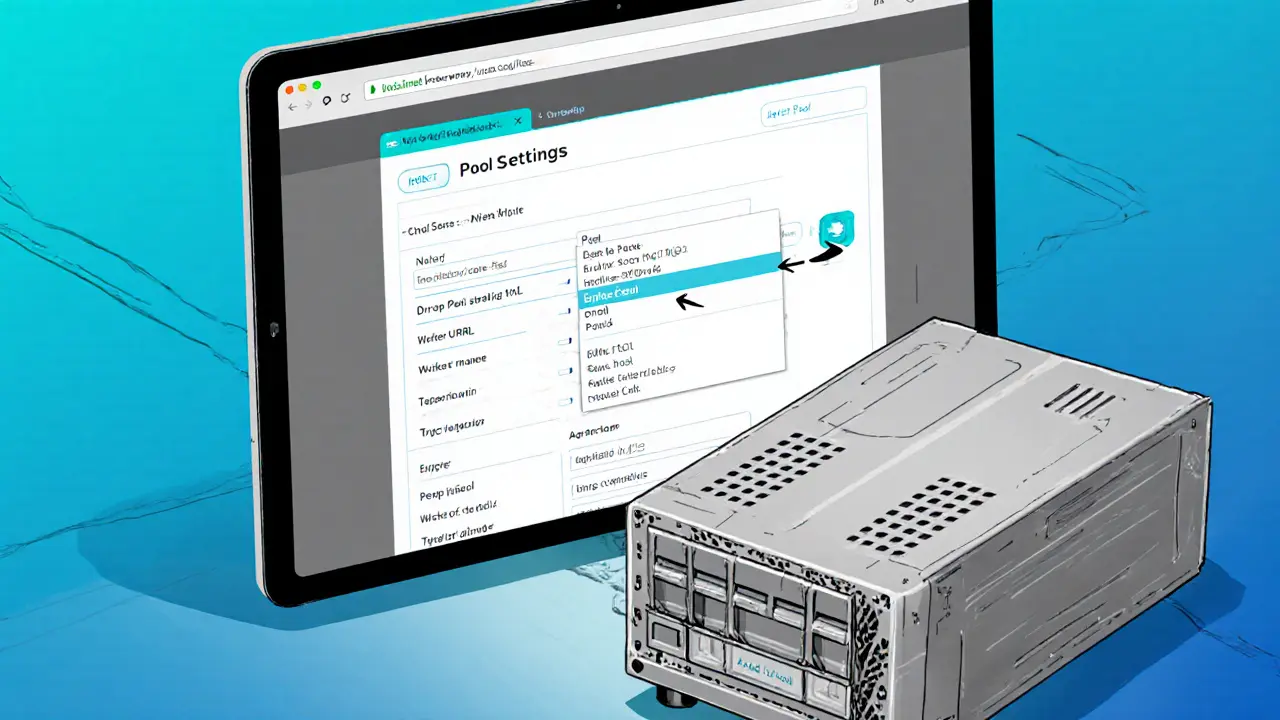Mining Pool Switching: Boost Your Crypto Mining Returns
When working with mining pool switching, the practice of moving your hashpower between mining pools to chase better payouts or lower fees. Also known as pool hopping, it lets miners react to changing pool performance in real time.
A mining pool is a collective of miners who combine their computing power to solve blocks more often and share the rewards proportionally.
Your contribution is measured in hashrate, the speed at which you generate cryptographic hashes. Higher hashrate means a bigger slice of the pool’s earnings, but it also means you feel the impact of any fee hike or payout delay.
Why Switch Pools?
Profitability drives the decision to switch. When a pool raises its fee or its payout scheme becomes less attractive, miners who monitor the metrics can jump to a lower‑fee pool and instantly improve their earnings. The move is only worthwhile if the expected gain outweighs the switching cost, such as downtime or extra transaction fees.
Another factor is block variance. Some pools prioritize low‑variance payouts, paying out small amounts more often, while others aim for high‑variance, large rewards after many blocks. Depending on your cash‑flow needs, you may hop between pools that match your current risk tolerance.
ASIC hardware plays a role too. Modern miners can re‑configure their devices via software APIs, allowing near‑instant pool changes. Older setups may need a manual restart, which adds latency. Understanding your hardware’s switching speed helps you decide how aggressive your strategy can be.
Tools like pool monitoring dashboards, API scripts, and profit calculators act as the eyes and hands of a switching strategy. They gather real‑time data on pool fees, payout structures, and network difficulty, then alert you when the profit gap widens enough to merit a move.
Regulatory environments also influence decisions. Certain jurisdictions impose taxes or reporting requirements on mining income, and some pools comply differently. Keeping an eye on compliance helps you avoid unexpected legal costs after a switch.
Finally, community reputation matters. Pools with strong anti‑cheating measures and transparent operator policies tend to stay stable, reducing the risk of sudden payout freezes. Switching to a well‑known pool can be a safety net when a smaller pool shows signs of instability.
All these elements—fees, variance, hardware capability, monitoring tools, regulatory impact, and pool reputation—create a web of relationships that shape a successful mining pool switching plan. By treating each factor as a piece of the puzzle, you can make data‑driven moves instead of blind hops.
Now that you see why switching matters and how it ties to mining pools, hashrate, profitability, and hardware, explore the guides below. They walk you through setting up monitoring scripts, comparing pool fee structures, and executing seamless switches without missing a beat.
How to Switch Mining Pools Efficiently: A Step‑by‑Step Guide for Miners
Learn how to switch mining pools safely and profitably. This guide covers why to switch, key criteria, step‑by‑step configuration, automation, monitoring, and FAQs.
VIEW MORE
